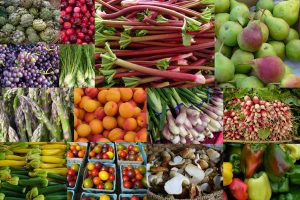Canning , freezing, and drying are popular home preservation methods today. In the past, people preserved food because they didn’t have any other choice. In times of pestilence, war, famine, tsunamis, and earthquakes, people wanted to make sure they had some food ‘put by.’ Unlike today, they lacked a year-round supply of fresh food and mechanical refrigeration. But preservation methods go well beyond freezing or drying food in an electric appliance, or canning it with special equipment.
, freezing, and drying are popular home preservation methods today. In the past, people preserved food because they didn’t have any other choice. In times of pestilence, war, famine, tsunamis, and earthquakes, people wanted to make sure they had some food ‘put by.’ Unlike today, they lacked a year-round supply of fresh food and mechanical refrigeration. But preservation methods go well beyond freezing or drying food in an electric appliance, or canning it with special equipment.
Here are 5 different ways you can preserve local produce for use throughout the year. Most are easier and less expensive than the more modern methods of canning and freezing:
- Quickly pickle vegetables by soaking in an acidic liquid. The simplest way you can pickle vegetables is to immerse slices or chunks in an acidic liquid such as vinegar, lemon juice, or whey. Other mildly acidic ingredients that you can use for pickling, include pomegranate juice, verjuice (underripe grape juice), soy sauce, and miso. Acid-pickled foods are a great alternative to fresh salads and can add a lot of interest to your meals. Think of them as crunchy, mouthwatering fast food.
- Ferment fruits or vegetables into wine or vinegar. When you have a bumper crop of fruits or vegetables, that’s the time to make wine or vinegar. Ferment almost any type of fresh or dried fruit to make a delicious “country” wine. Popular fruit choices include pears, peaches, or plums, and vegetables with a sweet nature, such as beets, carrots, corn, sweet potatoes, tomatoes, or winter squash. Reclaim fruit and vegetable peels before you discard them in the compost bin and use them to make vinegar. Exploit apple peelings left over after making applesauce, as well as orange peels, pineapple peels, and potato peels. Wine or vinegar making is also a good method to make use of culls, seconds, overripe, or fallen fruit. Just make sure that any of the produce you use is free of any mold, trimmed of any bruises, and thoroughly washed.
- Pickle or ferment vegetables with dry salt. Easy, practical, and inexpensive, you can use dry salt either to pickle or ferment a wide variety of vegetables. High salt concentration prevents fermentation to preserve vegetables in a near-fresh state. Use this method for cauliflower, cooking greens (spinach, kale, chard), shelled peas, and string beans. People familiar with this method consider dry-salted vegetables to be far superior in taste and texture to canned or frozen ones. In contrast, using a low salt concentration causes the vegetables to ferment and make products like sauerkraut or kimchi from cabbage. The sauerkraut method also works on turnips, rutabagas, and kohlrabies, for delicious wintertime sandwich and burger toppings or garnish for charcuterie.
- Macerate fruits with alcohol. Macerating fruits in alcohol is a form of pickling that is very common in cultures throughout Eastern Europe. It is an easy process that you can do at home with fresh fruit and vodka. You can add spices to the soaking liquid and use other types of liquor (such as rum or brandy), as long as it is at least 80 proof. Brandied or maraschino cherries are common examples of macerated fruits, and the resulting fruited liquor is a delicious beginning or end to any meal.
- ‘Cellar’ root vegetables. Cellaring is any form of storage that holds food in optimum condition for an extended period. Today’s modern “root cellar” is the refrigerator. However, a cold food cellar can be accomplished by using something as simple as a cool basement closet or fashioned using a clean metal or plastic, food-safe container that is partially buried in the ground. Root crops are the ideal cold cellar inhabitant, such as beets, carrots, turnips, and parsnips. Use these vegetables throughout winter as a roasted side dish, shredded for latkes, simmered in soups and stews, or baked into muffins and breads.
For more information about food preservation methods and recipes, see the book The Home Preserving Bible by Carole Cancler, available from booksellers everywhere.





this is not my answer
looking for how to preserved fruits
What are you looking for? Do you have a particular type of fruit you want to preserve? Feel free to ask a specific question here or on the contact page: http://www.homepreservingbible.com/contact/